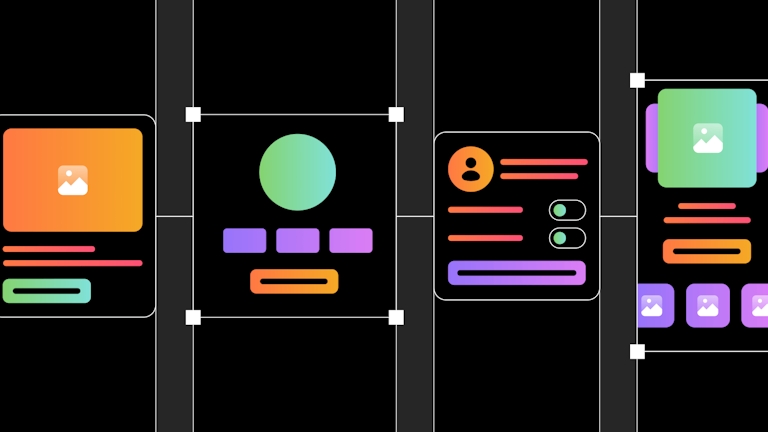In honor of Women in Engineering Day, we sat down with our very own María Gil, Director of Engineering. María works closely with all of our engineering teams, making sure that they’re happy and able to grow within Sketch.
Keep reading to learn about her journey, insights into the engineering field, and her hopes for the industry’s future.
Can you tell us what your day-to-day looks like at Sketch?
I am one of two Directors of Engineering at Sketch. My main responsibilities are to make sure Sketch is a great place to work at for engineers and to take care of seven (soon to be eight) engineering teams. My job is to ensure they’re happy and performing at their best.
Every day is different, but I normally spend time with my teams, participate in hiring interviews, and run or working on engineering initiatives. You might also see me collaborating with hiring strategies or company-wide initiatives such as compensation or performance reviews, aligning with the rest of leadership and other main stakeholders, or resolving (or trying to resolve) any blockers that might show up, at any level.
When I need to unwind after an intense day, I go out of the house — either for a walk, a run, or anything else that helps to keep my mind busy with something not work-related. Fresh air works great too!
What do you like the most about your job and working in engineering?
I love helping other engineers (and their managers) be more productive and happy while at work. It’s super rewarding to see the results.
How did you get into engineering and what has your career been like so far?
I do hold a bachelor’s and master’s in Computer Science, but I still sometimes ask myself how I got into that. While in high school, I didn’t really know what to choose. I knew I wanted it to be in the STEM industry, or something close to that, because I thought it would be something hard for me to accomplish, and I wanted to take on a challenge.
Of all those disciplines, I picked Computer Science because it was (or I thought it was) mostly around computers, and by then I used them a lot for playing games. After my second year of studying Computer Science, I knew I made the right choice and I started to like it a lot. If I’d had to choose a different career, my second choice would’ve been architecture.
I knew I wanted it to be in the STEM industry because I wanted to take on a challenge.
What’s the greatest challenge you’ve faced so far in your career? How did you overcome it?
I had a few months where I struggled a lot at work, and that led to switching jobs and started questioning myself about what should I do next. I knew I wanted to stay within engineering, or at least close to engineers, but I didn’t really know if I wanted to keep being a software engineer or try something else. Then, I made the decision to start trying other roles close to engineering (such as Scrum Master, Delivery Manager or Engineering Manager), until I actually realized I had found my path again.
I made the decision to start trying other roles close to engineering, until I actually realized I had found my path again.
In your opinion, how has the engineering landscape changed for women from when you first started out? What are your hopes for the future of engineering?
In my eyes, it has changed a lot. It’s now much more diverse and inclusive, by all means.
When I started my degree, we were only five women around many, many men in our classroom. By the second year, we were only two. I believe this could be extrapolated into any workplace too!
Nowadays there are many initiatives running (I personally participate in a couple of them!) where we try to empower individuals to make their future decisions based on themselves, and not on how many women (or men) normally study a specific degree or work in a certain industry.
The numbers are already starting to improve 😃
In regards to engineering in general, I hope we keep progressing at the same pace (at the very least) of the past few years to help improve the world we live in.
Have any women in technology influenced you? And if so, how?
Not women in technology per se, but I had the luck of having really nice coaches. Some of them were even colleagues from work, but they still felt like coaches because of the amount of advice they gave me. They supported me, in one way or another, in figuring out what my next steps should be and learning how to believe in myself and my abilities.
What advice would you give women just starting out in STEM?
Find yourself a mentor or somebody that can help you go into it, explain what it’s like, and tell you about the ups and downs you could face. All this information will help you understand the big picture and make you more confident and certain of the steps you’ll be taking.
Find yourself a mentor or somebody that can help you go into it, explain what it’s like, and tell you about the ups and downs you could face.
What’s one actionable change you think companies could make to improve inclusivity and help women excel in their roles?
When talking about gender equality (and this could be extended to any other diversity group), ideas like using inclusive language, equal pay and opportunities, or family conciliation come to mind. At the end of the day, we all perform the same job but might have slightly different needs. Being able to accommodate to those needs can help make companies more inclusive and welcoming of their diverse workforce. In turn, it will help improve performance, engagement and happiness all around.
We all perform the same job but might have slightly different needs. Being able to accommodate to those needs can help make companies more inclusive and welcoming of their diverse workforce.
Interested in joining our engineering team? Check out our Careers page to learn about current openings.



